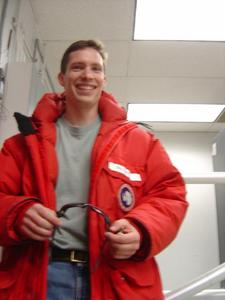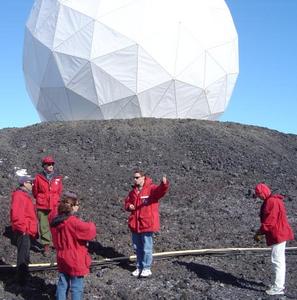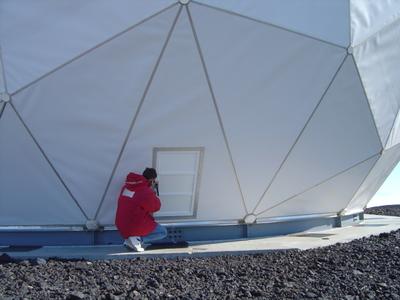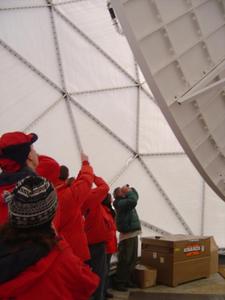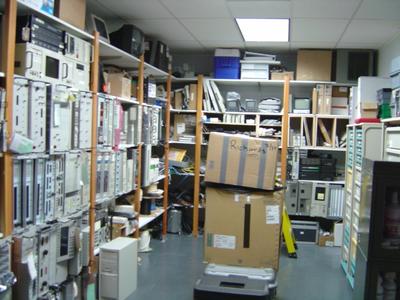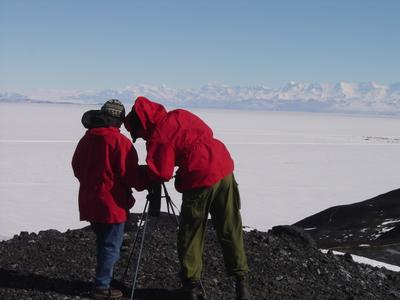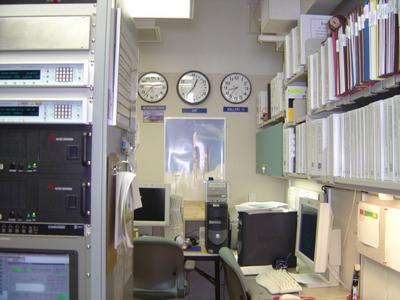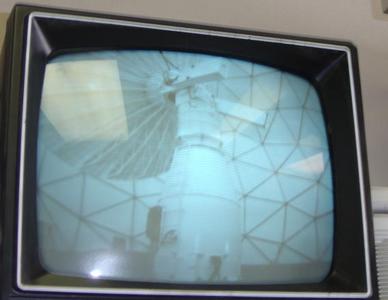
|
8 December, 2003A Tour of NASA's McMurdo Ground Station Today Erik Richards, our Crary neighbor across the hall, gave us the tour of NASA's McMurdo Ground Station. Located at 77' 50" S and 166' 40" E, it the world's farthest south satellite tracking station. The system tracks polar satellites. These pass over the poles at altitudes of nearly 400 miles and move so fast that they circle the Earth nearly every 90 minutes. This system works with US, Canadian, and European satellites in coordination with other ground stations around the world. Erik and his partner, Nik Sinkola, are in charge of monitoring the antenna as it tracks various satellites that pass over the continent collecting data. Some of its monitoring satellites have included: GRACE 1 and 2 (modeling Earth's gravity field and collecting global climate data), TRACE (explored the sun's photosphere) , FAST, WIRE, SWAS, and Canada's RADARSAT (which is creating high resolution maps of the continent). While we have nicknamed Nik and Erik as the "NASA boys", they are actually employed by Honeywell Technical Solution, Inc., who has the contract with NASA. Erik kindly drove our team to an area that is normally off limits and allowed us to go inside the dome that protects the antenna. He also planned it so that we would be present when a satellite passed. Inside the dome, the 10-meter antenna is basically a huge satellite dish and it towered above us. In the middle of the tour an alarm sounded and red light began flashing, indicating the passing satellite. The dish turned, tilted and rotated as it began tracking it. Each passing satellite has a slightly different orbit and computer programs determine the precise movement of the dish and the link. Each pass lasts roughly fifteen minutes. Just outside the Dome is Building 71 which houses the majority of the equipment needed to receive signals from and sent signals to the satellites that are in orbit. This facility is also the interface between the Crary Lab control room where Erik and Nik monitor the antenna and the antenna itself. The two buildings are connected by a fiber optic link that is just over 1 mile long. nmsp.gsfc.nasa.gov/tdrss/mgs.htm nmsp.gsfc.nasa.gov/tdrss/murdohome.htm www.wff.nasa.gov/~code452/mcmurdo.html
--
Contact the TEA in the field at . If you cannot connect through your browser, copy the TEA's e-mail address in the "To:" line of your favorite e-mail package. |




